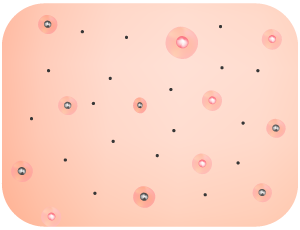PRE-TEENS AND TEENAGER TREATMENT PACKS

PRE-TEENS AND TEENAGER TREATMENT PACKS
ACNE GRADING

GRADE 1 ACNE
The mildest form of acne.
It consists mostly of comedones (congested pores / blackheads) and occasional pustules (pimples).
VIEW ACNE GRADE 1 TREATMENT PLAN
GRADE 2 ACNE
Mild to moderate acne.
Greater number of comedones (congested pores / blackheads) accompanied by papules (bumps) and mild pustules (pimples). Occasionally, deeper inflamed lesions will also develop.
Thorough exfoliation is required to keep Grade 2 Acne in check. If left untreated there is a high chance that it will progress to Grade 3.
VIEW ACNE GRADE 2 TREATMENT PLAN
GRADE 3 ACNE
Moderate to severe acne.
The main difference between Grade 2 and Grade 3 Acne is the amount of inflammation present.
Sore, red, swollen lesions are present. Papules (bumps) and pustules (pimples) are developed in greater numbers and nodules (hard, deep and painful lesions) are present.
VIEW ACNE GRADE 3 TREATMENT PLAN
GRADE 4 ACNE
The most severe form of acne.
Grade 4 Acne is often referred to as nodulocystic or cystic acne. The skin will display a whole spectrum of blemishes such as comedones (blackheads), papules (bumps), pustules (pimples) and nodules with the addition of deep-seated cysts.
Acne of this severity usually extends beyond the face and may affect the entire back, chest, shoulders and upper arms.
Grade 4 Acne should be treated by a dermatologist as it is notoriously difficult to control and effective treatment almost always requires powerful prescription medicine.
VIEW ACNE GRADE 4 TREATMENT PLANREVIEWS ON DERMEXCEL™ ACNE TREATMENT
